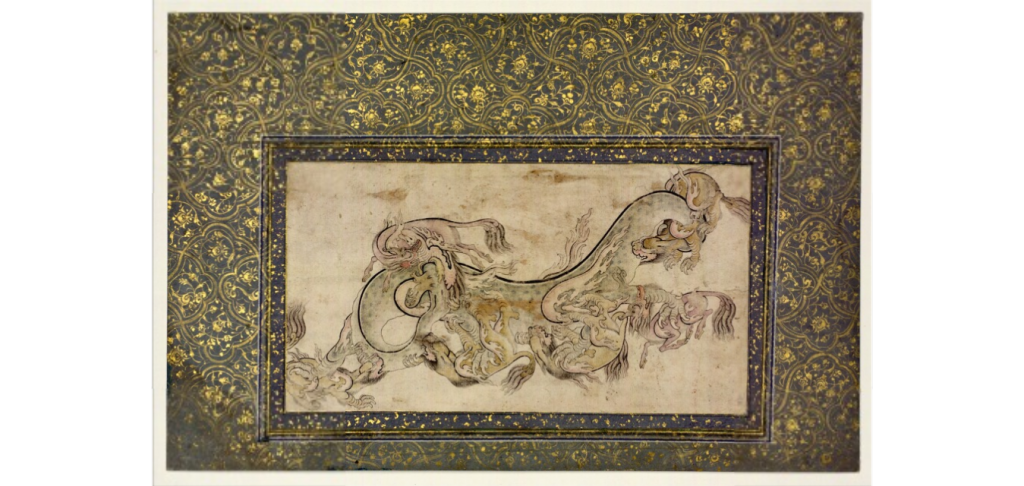
 |
|
|
|
|
#1 |
|
Member
Join Date: Sep 2013
Posts: 79
|
The yatağan in the Topkapi Palace armoury has signature on its back (Work of Ahmet Tekeli). Ahmet Tekeli, member of the court jewelers organisation is also mentioned several times in Court payroll record books (books of Ehl-i Hiref) of Kanuni Suleiman's era. One example lists the presents given by Suleiman Khan, for Ramadan Festival to court jeweler and koftgari master Ahmet Tekeli(3000 coins and a kaftan with spots). Ottoman court is famously very obsessive about keeping records of every small detail.
 And , I believe Ahmet Tekeli is the decorator of these blades, not the bladesmith. |
|
|

|
|
|
#2 |
|
Member
Join Date: Dec 2004
Location: Ann Arbor, MI
Posts: 5,503
|
Thanks Sancar!
|
|
|

|
|
|
#3 |
|
Member
Join Date: May 2008
Location: Czech Republic
Posts: 847
|
Enclosed please find some Ottoman and maybe Seljuk dragon and phoenix (and similar) motives. I would say floral motives are very typical Ottoman motives for "newer" weapons (??18th, 19th century). I am also enclosing two pictures from the book Sultanlarin silahlari by Hilmi Aydin and on this occasion I would like to ask Sancar, why the author calls the weapon "hanšer", and not "yatağan" ?
Regards, Martin |
|
|

|
|
|
#4 |
|
Member
Join Date: Sep 2013
Posts: 79
|
I personally find Hilmi Aydın's book not a very good source. I have the same book and I only use it for its pictures. Because he makes lots and lots of mistakes, misreadings of Ottoman Turkish scripts, misjudgements about origins of weaponry and terminology. Also, existing arms and armour terminology is not as clear cut as European counterpart(due to lack of interest in art history and archeology community in Turkey about arms and armour studies; most of my professors did not even consider it as a subject of study) Aydın must have made that mistake because of the shortness of the blade relative to later longer yataghans.
There is a Timurid period yataghan in display in Topkapı armoury about same blade length and shape with the Ahmet Tekeli yataghan, with a earless jade handle(which might be a later addition) That yataghan is older than Kanuni ones, even maybe older than Bayazid one, but it is categorized by the curator(who knows absolutely nothing about arms and armour; believe me, I met him) as a "knife". Below are some paintings in "Saz Yolu" or "Saz ▄slubu" by Ottoman painter Şahkulu, inventor of the style: Dragon in Leaves, 16th century  Dragon fighting unicorns, 16th century 
|
|
|

|
|
|
#5 |
|
Member
Join Date: May 2008
Location: Czech Republic
Posts: 847
|
Sancar,
Thank you ! Regards, Martin |
|
|

|
|
|
#6 |
|
Member
Join Date: Sep 2013
Posts: 79
|
You are most welcome, Martin.

|
|
|

|
|
|
#7 |
|
Member
Join Date: Jul 2005
Location: Toronto, Canada
Posts: 1,242
|
Hello,
Here is yet another gorgeous yataghan, possibly from the same workshop of Ahmed Tekelu. It's actually featured in the Furusiyya Foundation's collection. Dated 1500-1515. It exhibits the same phoenix and dragon in foliage theme. Attached the plates 56-57 from "The Arts of the Muslim Knight" Is it just me or does the blade look like wootz? The text refers to a 9th century Tang painting of a Turkish chieftain with "a long yataghan-like knife", shown in "Palace Museum" Taiwan, Ettinghausen 1963. has anyone run accros this painting? Emanuel |
|
|

|
 |
|
|